James W. Fowler‚ a renowned psychologist and theologian‚ introduced the theory of faith development in his seminal work‚ Stages of Faith (1981). His model outlines six stages of faith maturity‚ influenced by Jean Piaget‚ Lawrence Kohlberg‚ and Erik Erikson‚ providing a framework to understand spiritual growth.
1.1. Biography of James W. Fowler
James W. Fowler‚ born in 1940 and passing in 2015‚ was a theologian and psychologist known for his groundbreaking work on faith development. He earned degrees in theology and psychology‚ blending these fields to create his theory. Fowler’s work was influenced by Jean Piaget‚ Lawrence Kohlberg‚ and Erik Erikson. His 1981 book‚ Stages of Faith‚ introduced a six-stage model of faith development‚ impacting religious education and pastoral counseling globally.
1.2. Context and Significance of “Stages of Faith”
Stages of Faith‚ published in 1981‚ offers a developmental framework for understanding faith formation. Fowler’s work bridges psychology and theology‚ providing a structured approach to spiritual growth. His six-stage model has been widely used in religious education‚ counseling‚ and psychology‚ making it a significant contribution to understanding human spirituality and its progression across the lifespan.
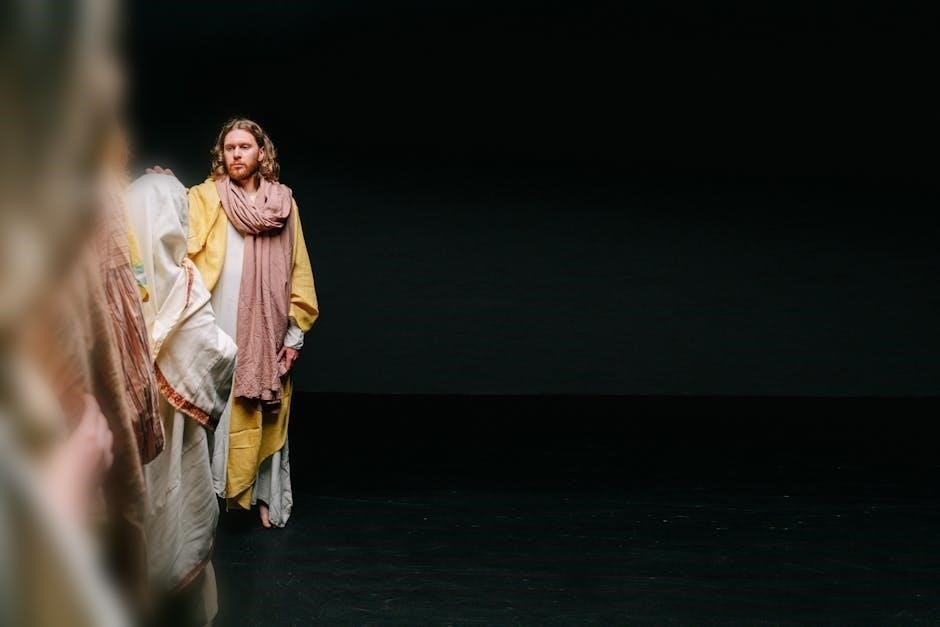
Overview of the Stages of Faith Model
James Fowler’s Stages of Faith model outlines six sequential stages of spiritual development‚ influenced by Piaget‚ Kohlberg‚ and Erikson‚ offering a framework for understanding faith maturation.
2.1. The Concept of Faith Development
James W. Fowler’s concept of faith development explores how individuals construct and reinterpret faith throughout life‚ influenced by Jean Piaget‚ Lawrence Kohlberg‚ and Erik Erikson. His approach integrates psychology and theology‚ emphasizing faith as a dynamic‚ evolving process of meaning-making. Fowler’s model highlights the journey from intuitive beliefs to universal compassion‚ providing a framework for understanding spiritual growth across cultures and ages.
2.2. Key Influences: Piaget‚ Kohlberg‚ and Erikson
James Fowler’s theory of faith development draws heavily from Jean Piaget’s cognitive stages‚ Lawrence Kohlberg’s moral reasoning‚ and Erik Erikson’s psychosocial theory. Piaget’s concept of cognitive growth inspired Fowler’s faith stages‚ while Kohlberg’s moral development framework shaped his understanding of ethical reasoning in faith. Erikson’s psychosocial stages influenced Fowler’s emphasis on identity and community in faith formation.
2.3. The Six Stages of Faith: A General Outline
Fowler’s model outlines six stages of faith‚ progressing from childhood to adulthood. Stage 1 is intuitive-projective‚ Stage 2 mythic-literal‚ Stage 3 synthetic-conventional‚ Stage 4 individuative-reflective‚ Stage 5 conjunctive‚ and Stage 6 universalizing. Each stage reflects growing complexity in understanding faith‚ shaped by cognitive‚ moral‚ and psychosocial development‚ influenced by Piaget and Kohlberg’s theories.
Stage 1: Intuitive-Projective Faith
This stage‚ spanning ages 3-7‚ is marked by imagination and fantasy‚ where faith is shaped by trust in caregivers and basic trust in the universe.
3.1. Characteristics of Stage 1
Stage 1‚ Intuitive-Projective Faith‚ occurs from ages 3-7. It is characterized by imagination‚ fantasy‚ and a pre-logical understanding of the world. Children form their faith through trust in caregivers and basic trust in the universe. Stories‚ symbols‚ and rituals are interpreted literally‚ shaping their initial perceptions of the divine and their place in the world.
3.2. Examples and Implications for Early Faith Development
Children in Stage 1 often interpret faith through imagination and trust. For example‚ they may believe in Santa Claus as a divine gift-giver or see prayer as a magical solution. This stage emphasizes the role of caregivers in shaping faith‚ highlighting the importance of trust and storytelling in early spiritual development.
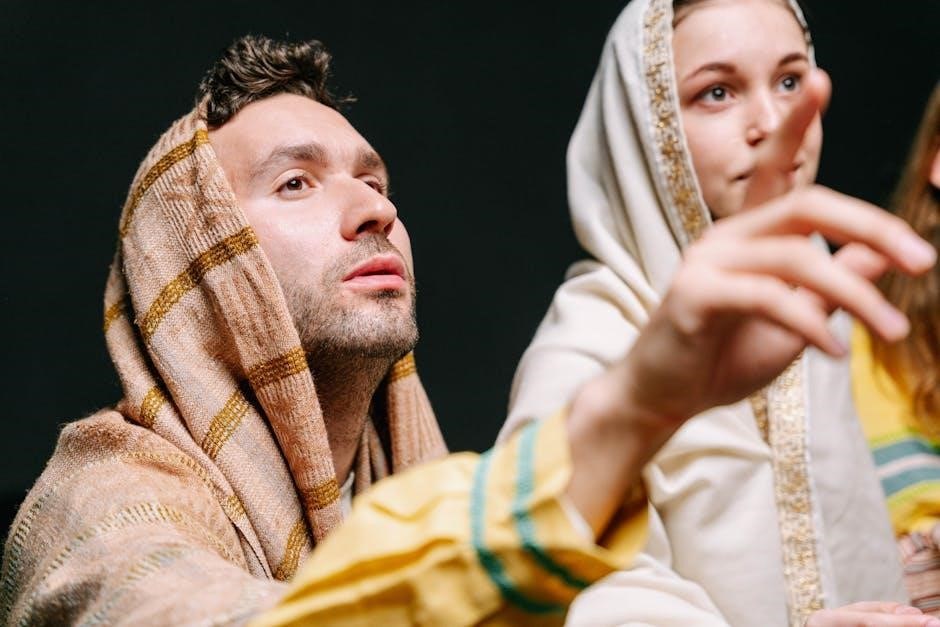
Stage 2: Mythic-Literal Faith
Children aged 8-12 often interpret faith through literal stories and symbols‚ seeking belonging and authority. This stage emphasizes the role of narratives in shaping belief systems and moral understanding.
4.1. The Role of Stories and Symbols
In Stage 2‚ stories and symbols become central‚ offering moral guidance and a sense of belonging. These narratives‚ often taken literally‚ provide a framework for understanding the world and one’s place within it‚ deeply influencing belief systems and shaping early moral development.
4.2. Literal Interpretation and Belonging
In this stage‚ individuals interpret stories and symbols literally‚ seeking clear moral guidelines and a sense of belonging. Rituals and doctrines reinforce beliefs‚ fostering identity within a community. This literal understanding provides comfort and structure‚ aligning actions with accepted norms while deepening spiritual and moral development.
Stage 3: Synthetic-Conventional Faith
This stage marks the beginning of adolescence‚ where individuals form a cohesive belief system‚ blending personal experiences with societal norms. Faith becomes a source of identity‚ shaped by community and authority‚ providing moral guidance and a sense of belonging.
5.1. Adolescence and the Formation of Identity
During adolescence‚ individuals integrate their beliefs into a cohesive system‚ blending personal experiences with societal norms. This stage is crucial for identity formation‚ as teens begin to internalize values and meanings‚ often influenced by family‚ culture‚ and community; Faith becomes a framework for understanding oneself and one’s place in the world‚ transitioning from childhood imaginings to more structured beliefs.
5.2. Conformity and Authority in Faith
In Stage 3‚ individuals conform to societal and religious norms‚ internalizing beliefs and practices from their community. Authority figures like parents‚ clergy‚ and scriptures strongly influence their faith. While this provides stability and belonging‚ it often limits personal autonomy. The emphasis is on fitting into established frameworks rather than exploring individual spiritual truths‚ reflecting a tension between conformity and personal reflection.
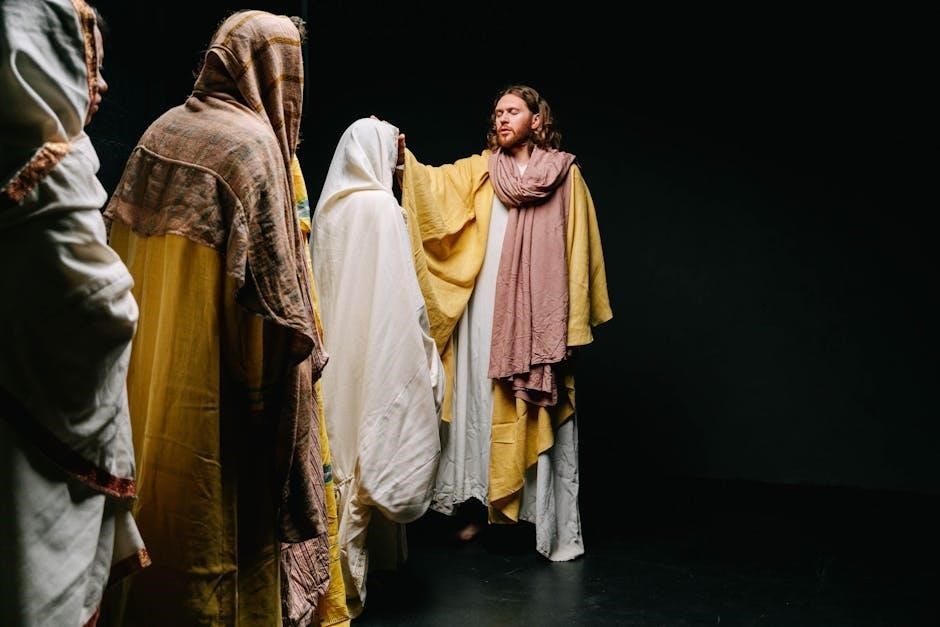
Stage 4: Individuative-Reflective Faith
Stage 4 marks a shift toward personal responsibility and autonomy in faith. Individuals critically reflect on their beliefs‚ questioning previous assumptions and seeking a cohesive understanding of spirituality‚ leading to a more authentic and self-defined faith journey.
6.1. The Transition to Personal Responsibility
Stage 4 introduces a significant shift as individuals embrace personal responsibility for their faith. They move beyond external authority‚ critically examining beliefs and values. This phase fosters autonomy‚ enabling individuals to construct a coherent faith system that aligns with their identity‚ leading to a more authentic and self-directed spiritual journey.
6.2. Critical Reflection and Autonomy
In Stage 4‚ individuals engage in critical reflection‚ questioning inherited beliefs and values. They seek personal meaning and coherence‚ moving beyond external authority. This phase emphasizes autonomy‚ as faith becomes internally consistent and self-chosen. Critical reflection fosters a deeper understanding of oneself and the world‚ leading to a more authentic and self-directed expression of faith.
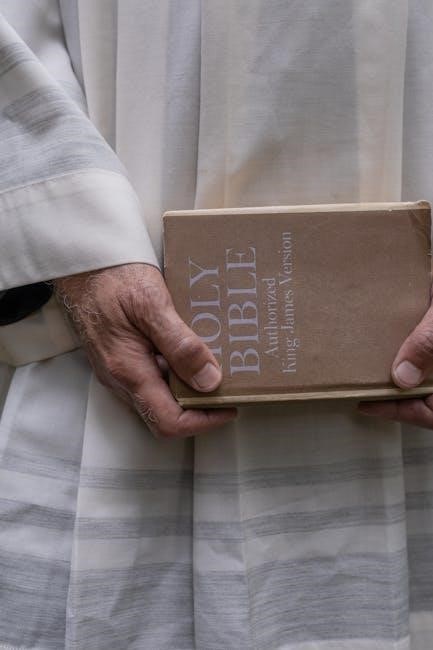
Stage 5: Conjunctive Faith
Stage 5‚ Conjunctive Faith‚ involves embracing paradox and ambiguity‚ integrating opposites in faith. Individuals acknowledge the complexity of life‚ seeking to reconcile contradictions. This stage fosters humility and openness‚ recognizing the limits of human understanding while deepening spiritual insight and compassion.
7.1. Embracing Paradox and Ambiguity
At Stage 5‚ individuals embrace paradox and ambiguity‚ recognizing the complexity of faith. They reconcile contradictions‚ acknowledging that mystery coexists with belief. This acceptance fosters humility‚ openness‚ and a deeper understanding of faith’s multifaceted nature‚ leading to a more mature and compassionate spiritual perspective.
7.2. Integration of Opposites in Faith
In Stage 5‚ individuals integrate opposing elements‚ such as sacred and secular‚ doubt and certainty‚ transcending dualisms. This synthesis fosters a holistic understanding‚ where contradictions enrich faith rather than divide it‚ leading to a unified and compassionate worldview that honors diversity and interconnectedness.
Stage 6: Universalizing Faith
8.1. The Highest Stage of Faith Development
Universalizing faith is the highest stage‚ marked by profound empathy and a universal perspective. Individuals at this stage transcend specific traditions‚ embracing a global‚ compassionate worldview. They prioritize justice and serve humanity selflessly‚ reflecting a deep understanding of interconnectedness. This stage‚ however‚ is rare‚ and few achieve such an expansive and altruistic faith orientation.
8.2. Transcendence and Universal Compassion
Transcendence and universal compassion characterize the highest stage of faith. Individuals experience a deep sense of unity with all existence‚ moving beyond specific doctrines. Their focus shifts to global justice and unconditional love‚ reflecting a profound spiritual awakening. This stage embodies the ultimate integration of faith‚ ethics‚ and humanity‚ offering a vision of universal harmony and reconciliation.
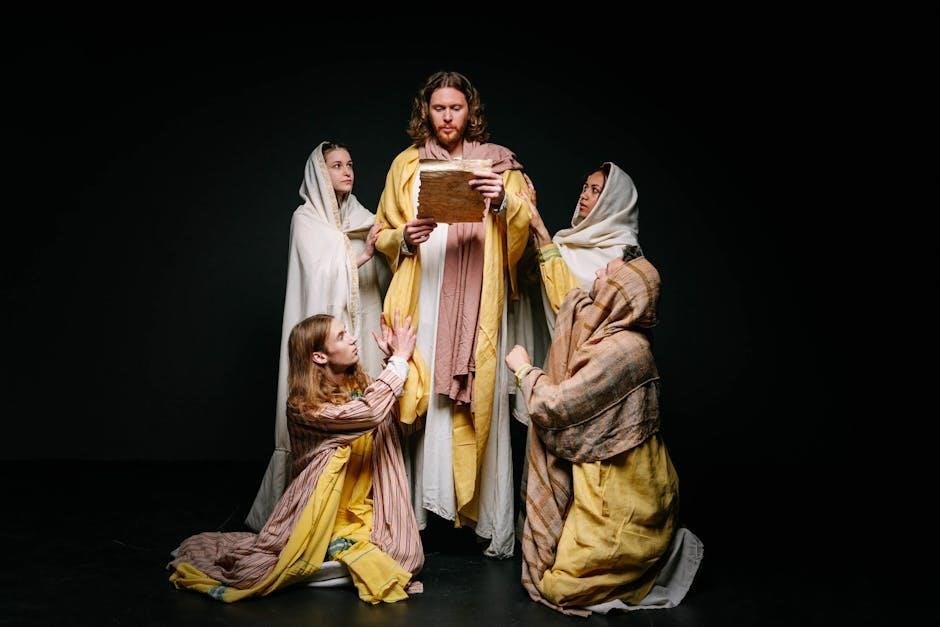
Critiques and Controversies
Fowler’s model has faced criticism for its rigidity and cultural bias. While it offers a valuable framework‚ some argue it oversimplifies faith development and neglects diverse theological perspectives.
9.1. Strengths and Weaknesses of the Model
Fowler’s model is praised for its comprehensive framework integrating psychology and theology‚ offering insights into faith development. However‚ critics argue it may oversimplify complex faith journeys‚ exhibit cultural bias‚ and lack empirical validation‚ potentially neglecting non-Western or non-Christian perspectives.
9.2. Alternative Perspectives on Faith Development
Some scholars argue that Fowler’s model may overlook cultural and religious diversity‚ proposing alternative frameworks that emphasize community and context over individual stages. Critics suggest integrating theological perspectives more deeply‚ while others highlight the need for more empirical research to validate the universality of the stages across different faith traditions and societal settings.
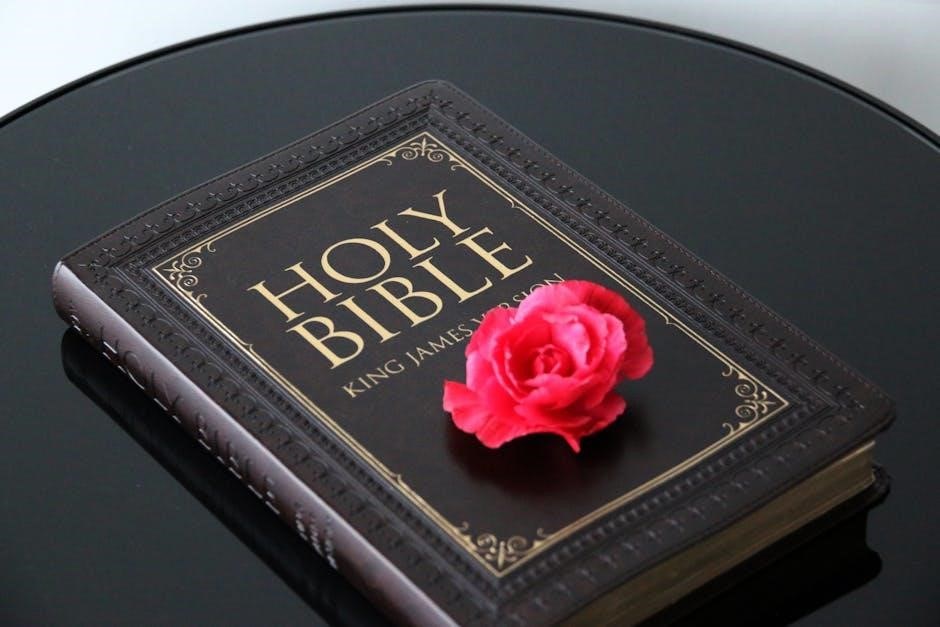
Practical Applications of Fowler’s Model
Fowler’s stages provide valuable insights for religious education and pastoral counseling‚ helping educators and counselors support individuals in their faith journeys and foster spiritual growth effectively.
10.1. Implications for Religious Education
Fowler’s model offers educators a framework to tailor religious instruction to individuals’ developmental stages‚ fostering deeper spiritual engagement. By aligning teaching methods with students’ faith stages‚ educators can promote meaningful growth‚ encouraging critical reflection and personal faith ownership. This approach enhances the effectiveness of religious education‚ making it more relevant and transformative for learners at every level.
10.2. Uses in Pastoral Counseling and Psychology
Fowler’s stages of faith provide a valuable framework for pastoral counselors and psychologists to understand individuals’ spiritual journeys. By identifying a person’s faith stage‚ counselors can offer tailored guidance‚ addressing emotional and existential struggles. This approach fosters personal growth‚ helping individuals integrate faith into their lives‚ navigate doubt‚ and find meaningful purpose‚ enhancing both psychological and spiritual well-being.
Real-World Examples and Case Studies
Fowler’s model is illustrated through real-life examples‚ such as individuals transitioning from literal to reflective faith‚ highlighting how stages manifest in personal spiritual journeys and growth.
11.1. Observing Faith Development in Individuals
Observing faith development in individuals reveals unique spiritual journeys. Fowler’s stages are evident as people progress from intuitive beliefs to reflective‚ mature faith. For instance‚ a child may exhibit intuitive-projective faith through imaginative storytelling‚ while an adult might demonstrate synthetic-conventional faith by conforming to community norms. These observations highlight the dynamic and personal nature of faith growth.
11.2. Applying the Model Across Different Cultures
Fowler’s stages of faith are observed across cultures‚ though expressions vary. Cultural influences shape how individuals experience and articulate faith. For instance‚ collective-oriented societies may emphasize community and authority‚ aligning with synthetic-conventional faith‚ while individualistic cultures foster personal reflection‚ resonating with individuative-reflective stages. This highlights the model’s universal applicability while acknowledging cultural nuances in faith development.

The Role of Community in Faith Development
Community plays a vital role in shaping faith‚ offering support‚ shared beliefs‚ and a sense of belonging. It provides a collective context for spiritual growth‚ influencing individuals’ faith journeys through shared practices and values.
12.1. Social Networks and Faith Formation
Social networks significantly influence faith formation by shaping beliefs and practices through shared experiences and relationships. These networks provide emotional support‚ reinforce values‚ and create a collective identity‚ fostering spiritual growth. Research by Nicholas Christakis and James Fowler highlights how social connections impact faith development‚ emphasizing the role of community in nurturing and sustaining faith across Fowler’s stages.
12.2. The Impact of Culture on Fowler’s Stages
Cultural contexts significantly shape faith development‚ influencing how individuals progress through Fowler’s stages. While Fowler’s model is rooted in Western psychology‚ cultural practices‚ values‚ and beliefs can modify the expression of faith at each stage. For instance‚ collectivist cultures may emphasize community and shared identity‚ affecting earlier stages‚ while individualist cultures might prioritize personal reflection in later stages.
Psychological and Theological Integration
James Fowler’s work seamlessly integrates psychology and theology‚ bridging the gap between human development and spiritual growth. His theory offers a holistic understanding of faith development.
13.1. Bridging Psychology and Theology
James Fowler’s work integrates psychological theories with theological insights‚ creating a comprehensive understanding of faith. His stages of faith model bridges developmental psychology with spiritual growth‚ offering a framework that connects human development theories to religious and theological perspectives‚ providing a holistic view of faith as a dynamic‚ evolving process.
13.2. The Quest for Meaning in Human Development
James Fowler’s stages of faith model underscores the human quest for meaning as a central driver of development. By integrating psychological insights with theological reflection‚ Fowler’s work illuminates how individuals seek purpose and identity across life stages. This journey involves transitions from intuitive beliefs to reflective‚ universal compassion‚ emphasizing faith as a dynamic‚ lifelong process of growth and self-discovery.
James Fowler’s Stages of Faith offers a profound framework for understanding faith development‚ blending psychology and theology to illuminate life’s spiritual journey‚ fostering deeper self-awareness and growth.
14.1. Summary of Key Insights
Fowler’s theory provides a transformative understanding of faith development‚ highlighting its progressive nature. By integrating psychology and theology‚ he offers a universal framework for spiritual growth‚ applicable across cultures and belief systems‚ emphasizing personal reflection‚ community influence‚ and the lifelong journey of seeking meaning and connection to the divine.
14.2. The Enduring Relevance of Fowler’s Work
Fowler’s work remains influential due to its interdisciplinary approach‚ bridging psychology and theology. His stages of faith offer a universal framework for understanding spiritual growth‚ applicable across cultures and belief systems. The model’s emphasis on personal and communal development continues to resonate‚ making it a vital resource for religious education‚ counseling‚ and understanding the human quest for meaning.

Further Reading and Resources
Explore PDFs of Fowler’s Stages of Faith and related articles for deeper insights. Recommended books and online resources offer comprehensive analysis and practical applications of his model.
15.1. Recommended Books and Articles
James W. Fowler’s seminal work‚ Stages of Faith: The Psychology of Human Development and the Quest for Meaning‚ is essential reading. Additional resources include Becoming Adult‚ Becoming Christian and articles in the Journal of Microscopical Science. PDFs of his work‚ such as “james-fowler-stages-of-faith.pdf‚” are widely available online for deeper exploration of faith development theories.
15.2. Online Resources and PDFs
Several online resources offer access to James Fowler’s work. PDFs like “james-fowler-stages-of-faith.pdf” are available for free download. Websites such as the Internet Archive and academic databases provide access to his books and articles. Additionally‚ Google Scholar and ResearchGate host numerous PDFs and summaries of his theories‚ making his work accessible to researchers and enthusiasts worldwide.
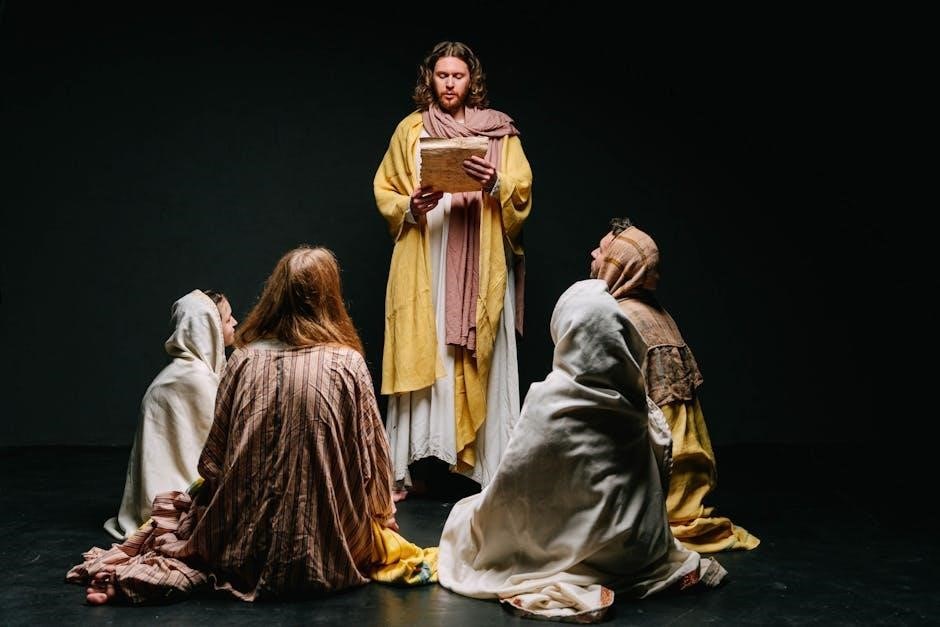
Final Thoughts on Faith Development
Fowler’s model offers a profound guide for understanding faith as a dynamic‚ evolving journey. His stages illuminate the progression from basic trust to universal compassion‚ encouraging self-reflection and grace.
16.1. Encouraging Growth in Faith
Encouraging growth in faith involves understanding and nurturing the journey through Fowlers stages. Empathy‚ dialogue‚ and self-reflection are key tools to foster deeper spiritual understanding. By embracing personal autonomy and exploring meanings‚ individuals can cultivate a mature‚ compassionate faith. Supportive communities and mentors play a vital role in guiding this lifelong process of spiritual development and enrichment.
16.2. The Journey of Faith as a Lifelong Process
Faith development‚ as outlined by Fowler‚ is a dynamic and evolving journey. It progresses through stages marked by growth‚ questioning‚ and integration. Each phase builds on the previous‚ fostering deeper understanding and connection. This lifelong process requires patience‚ openness‚ and a willingness to embrace change‚ ultimately leading to a richer‚ more meaningful spiritual life.
